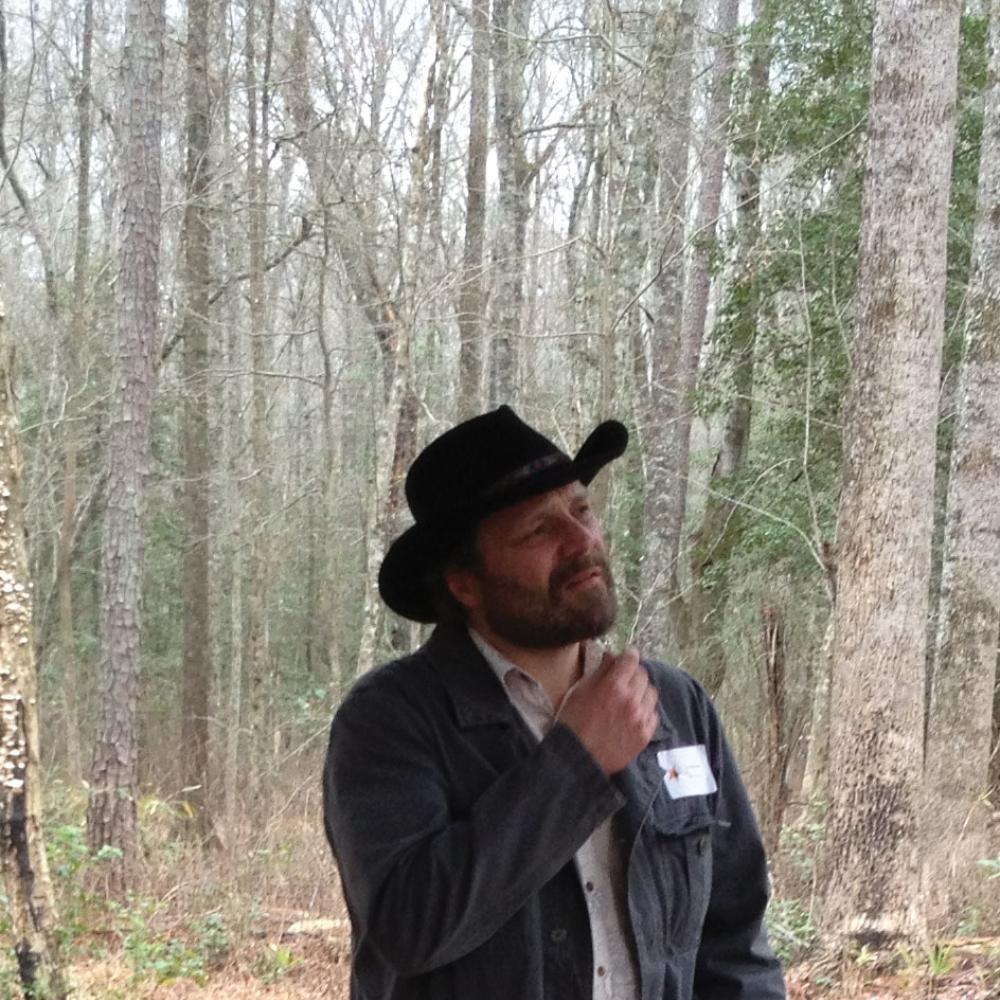This IQ follows anthropology professor Daniel Sayers as he wades through the story of generations of escaped slaves who lived in the Great Dismal Swamp from the early seventeenth century till the Civil War. An NEH-funded film, Landscapes of Power: Freedom and Slavery in the Great Dismal Swamp is based on excavations on a large interior island performed over five years by Sayers and field schools from American University. The field schools require students to work in a “hot, humid, wet, insect-heavy environment,” five days a week, for three to six tuition credits.
What’s the Great Dismal Swamp?
It’s a place that likes to steal my sunglasses, Zippo lighters, and archaeological equipment—its bears like to chew up my dirt sifters. It’s a hundred ninety-square-mile wildlife refuge in southeastern Virginia and northeastern North Carolina.
Who were Maroons?
The history of the Great Dismal Swamp is certainly not a Robinson Crusoe story. Maroons were enslaved Africans who permanently removed themselves from slavery by finding out-of-the-way and remote places.
How did you become interested in Maroons?
I first learned of Maroons in a class on African-American archaeology taught by Warren Perry. From his forceful and impassioned discussion of how important Maroons were, and how little archaeological work had been done on them, I was hooked.
Has there ever been commercial activity in the swamp?
George Washington has a connection. In the early 1760s, entrepreneurs started the Adventurers to Drain the Great Dismal Swamp, to which Washington belonged. It was followed by numerous lumber concerns up through the Civil War. The swamp saw vast lumbering projects and the construction of canals to transport wood products. Most of the lumbering and canal excavation was performed by enslaved African Americans.
Did the Dismal Swamp Maroons have leaders?
I think there were. Their roles were like those of a village elder or wise person who was present to keep the order.
How did the Maroons survive?
They probably cultivated community rice and grain fields, and made numerous things out of wood and plants (like furniture, musical instruments, and containers). They knew which plants were edible, usable for dyes and medicine, or good for keeping mosquitoes at bay.
Have you had an Indiana Jones moment?
I’m pretty sure Indy would not do well in the Dismal—there are a goodly number of active snakes. I had moments where mysterious things seemed to happen (radios turning on and heavy things moving without my assistance), was nearly attacked by a rabid raccoon, and, in June and July, it feels like you’re walking through a jungle. Discovering sites there is about as Indy as it gets.
Why is the Dismal Swamp now only about a tenth the size it was in the eighteenth century?
Lumbering and canal excavation in the nineteenth century were the impetus. Also, as parcels of swamp became smaller through sell-offs, investor farmers turned the swamp over to the plow—and then small towns and hamlets sprung up on former swamp land.
What’s the core story of the Dismal Swamp?
Hmmm. Kind of a tough call as there are a few aspects of this history that might qualify. Thousands of African-American Maroons, Indigenous Americans, and enslaved African-American laborers lived there in a variety of communities and, in the process, created their own social and economic world between 1607 and 1860.
Are some of today’s residents of Chesapeake and Suffolk, Virginia, descendants of Maroons who lived in the Dismal Swamp?
No doubt. Whether they know that or not is a different issue.
Why didn’t anyone attempt to recapture the Maroons?
Searchers for interior Maroons had problems. They would have had to walk—no boats or horses were going to get through that vine- and foliage-thick swamp. Searchers were not necessarily going to get through on foot either. There was the standing water, spongy peat, sinkholes, and even, maybe, pockets of quicksand here and there. Finally, Maroons were tough and not afraid. So, even if raiders found one of the interior communities, they had to actually overtake them. Maroons were armed, and they probably booby-trapped the swamp surrounding their villages.
Wasn’t it more difficult to try to survive in the Dismal Swamp than to endure the life of a slave on a plantation?
Naw, I don’t think so. That racist and violent world outside the swamp was not safe for anyone, except for maybe the top 10 percent of the white population. The swamp has its dangers, but if you are aware, observant, and smart, most of those dangers are avoidable.
Did the Maroons in the Dismal Swamp leave before or after the Civil War?
Most of them left during the Civil War. I’m not as certain about the Maroons who lived and worked along canals. But as far as interior Maroons and their communities are concerned, our evidence points to nothing persisting after the 1860s.
Have there been discoveries of human skeletal remains?
No. We haven’t found anything like that, nor has anyone else recorded anything like that in the swamp previously.
Why is the story of the Maroons in the swamp worth knowing?
Defiant people entirely undermined and left the racist and brutal modern world. They created a social and economic world of their own. This was the civil rights, occupy, and labor movements all rolled into one and made inspiringly manifest for more than two hundred fifty years. I marvel at it every day.


